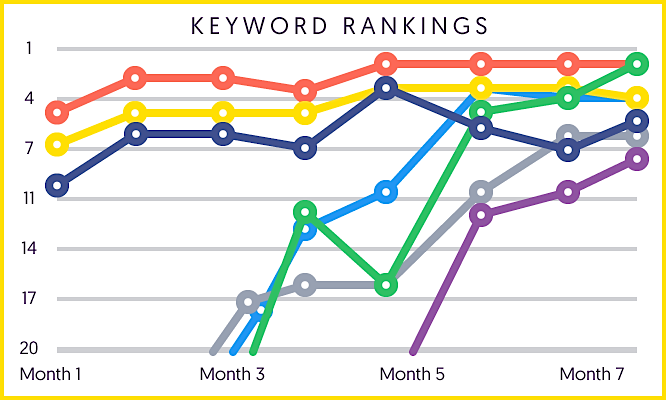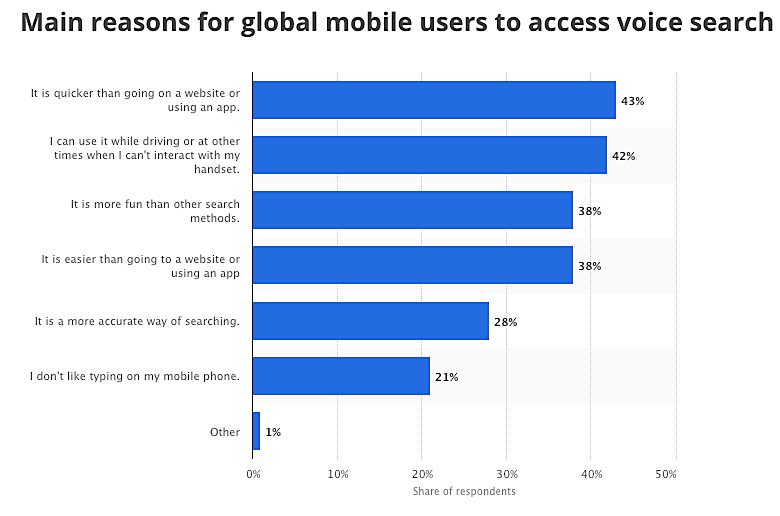10 Web Directories You Can Still Count on in 2018
—Web directories play an important role in internet marketing even today, helping website owners diversify traffic sources and find new customers. But so many directories have been penalized by Google or are no longer updating their listings. How do you know which ones you can still count on?
Let’s explore a few things you should look for in a web directory before submitting your website in 2018. Then I’ll share ten web directories that offer real marketing value—from ones connecting you with local customers to broader directories that have stood the test of time.
3 Things to Look for in Web Directories in 2018
The key to finding reputable web directories these days is looking for ones that offer real value and rise above the “link farm” herd. Here are three things to look for that will help you sort the worthwhile from the worthless.
1. Directories that market themselves to end users, and not just website owners –
When a directory is a true resource to your potential customers, it’s more likely those customers will search there for businesses like yours. Local directories are a great example of this, helping buyers find businesses they want nearby.
2. Directories with high editorial standards –
You don’t want links to your business website in “bad neighborhoods” with spammy and scammy websites, or with irrelevant ones. Quality directories don’t instantly approve listings. Editors review every submission carefully, and they’ll sometimes even add their own vetted suggestions. Remember, the higher quality the directory is as a resource overall, the more credibility it has (and the more credibility it lends you.)
3. Directories that focus on benefits to you that they can actually provide –
Years ago, Google penalized a lot of web directories it found to be of low value. It was common at the time for directories to promote themselves as sources of “link juice” for SEO. Those days are in the past. If you plan to use directory submissions in your marketing in 2018, focus on ones offering true value—connecting you with actual customers (or readers, or subscribers, or whatever you’re targeting,) In other words, look for directories that have a purpose beyond SEO.
Now let’s look at some specific directories you may want to consider.
10 Web Directories That Can Still Help Your Website
Here are 10 web directories still worth submitting your website or business to in 2018. They’re broken down into two separate groups to help you find what you need—general web directories and local business directories. And each group is sorted in alphabetical order.
General Web Directories
These first five options are general directories which publish links and profiles for a wide range of sites. Whether you run an online business or a brick-and-mortar store, these give you a good place to start.
Alive Directory
Alive Directory is a well-established general directory that features strict editorial oversight to maintain the quality of website listings found there. You can submit your business website not only to general industry categories, but to appropriate categories within your geographic region, helping you connect with the right potential customers.
Aviva Directory
Aviva Directory was founded in 2005. While primarily a general web directory, Aviva Directory has something that sets it apart—it also features a separate blog directory. That’s a good way to separate content-focused sites seeking readers and subscribers from business websites trying to sell products and services. No matter what kind of website you run, Aviva should have a relevant home for your listing.vvv
BOTW
Best of the Web (BOTW) is a general web directory that launched back in 1994. Similar to Aviva, it helped set itself apart from other general directories by adding more specialized ones to its site. In this case, you’ll find a blog directory, UK-specific directory, and local directory in addition to the primary general web directory.
Jasmine Directory
Jasmine Directory, founded in 2009, is another option that made a name for itself for its human-edited standards (no automatic submissions) and the quality hand-picked sites editors added. Unlike most directories, Jasmine even labels editor-chosen listings to separate those sites from ones submitted by site owners. It might not sound ideal for you as a site owner, but it actually tells visitors your site was deemed worthy of being listed alongside those top hand-picked resources. And that lends your own listing more credibility.
Jayde
Jayde is one of the oldest web directories, launched in 1996 as a B2B resource. While technically a “business directory,” Jade is general enough in scope that your website is bound to find a home here no matter what kind of product or service your company sells. Don’t stop with your submission though. Browse Jayde to find your next service provider while you’re at it.
Local Business Directories
These five local directories will help you find businesses near you, whether you’re at home or on-the-road.
Bing Places
Help Bing users find your business by claiming your existing listing or adding a new listing to this Microsoft-powered directory. By claiming your listing, you can verify and add information about your business, including photos and service information, telling customers what they really want to know before visiting or contacting you.
DirJournal
Directory Journal launched in 2007 as a general web directory, and has since turned its focus to local search. This directory makes it easy for visitors to search for business types near their location, or they can browse businesses by category to find things they may not have thought to specifically search for. DirJournal also offers an extensive collection of content in its network of blogs as well as online resources to help you better manage your business website.
Google My Business
Submitting your business to Google My Business is a no-brainer, especially if local customers are important. You’ll get more control over how your business information appears not only in Google’s usual search results, but also in Google Maps results (such as when someone searches for nearby restaurants or bank branches). For example, you can let customers know your store hours, website, phone number, and street address so they can find you.
Yelp
Yelp might be most known for its customer reviews and ratings of businesses, but at its heart it’s still a local web directory. If you want to find local businesses to visit, you may rely on Yelp to tell you what’s around. While the reviews get the attention for their social proof, you want your business on Yelp mostly to help customers find you.
Yellow Pages
Yellow Pages is perhaps the oldest directory—and one of the best known—on this list. What began as a printed local business phone directory is now so much more. Today, the Yellow Pages brand represents a trusted source of local business listings online.
Do you have a favorite web directory not on this list that you’d still recommend? Why do you think it still has value today when so many directories have lost importance in recent years? I’d love to hear your thoughts in the comments.
—

Photo: Getty Images
SaveSave
SaveSave
SaveSave
SaveSave
Online Advantages, an Internet Marketing Company, Announces New Location in Mooresville, North Carolina
(MENAFN Editorial) MOORESVILLE, N.C., Nov. 28, 2017 /PRNewswire/ --Matt Maglodi, founder of the internet marketing company Online Advantages, is pleased to announce the grand opening of a new East Coast office in Mooresville, North Carolina. The new location will serve the Carolinas, the greater Northeast Coast as well as the Lake Norman area.
To learn more about Online Advantages and the high quality and affordable digital marketing services that they offer their valued clients, please visit .
To celebrate the grand opening of the new Online Advantages location, Maglodi said he will be offering free monthly marketing workshops to small businesses that will cover the basics of internet marketing.
"We are looking forward to working more closely with clients in and around the area, and offering our effective and innovative digital marketing services, including SEO, web development, lead generation, online reputation management and more," Maglodi said.
Online Advantages also offers the following services:
"We're constantly researching, testing, connecting, and finding other ways to stay on top of this always-changing industry so we can offer the best, most relevant advice to help you succeed. The blueprint for online success is simple: we do the heavy lifting while you focus on what matters most, your customers."
About Online Advantages:
Online Advantagesis a unique full service internet marketing company. Founder Matt Maglodi specializes in all aspects of online marketing from video marketing, to pay per click advertising, organic search and social media. For more information, please visit .
OnLine AdVantages Mooresville125 Trade Court F #199Mooresville, NC. 28117704-734-9909 View original content with multimedia:
SOURCE Online Advantages
Related Links
MENAFN2811201700701241ID1096160242
10 Actionable Tips to Make Your Content Drive Sales
Do you want higher engagement on your website? What about driving more traffic? Would you like to increase the number of conversions?
Three questions. One answer. Content.
Content brings the horse to the water, so to speak, but in this case, you can make it drink. According to CMO council, the leading benefits of using enriched or personalized content include but are not limited to:

Source
Personalized content also builds credibility, augments the brand voice, develops relationships with target audiences, and helps them make an informed decision.
The only catch is that you need to know ‘how’ because there is no silver bullet when it comes to crafting the perfect content.
Furthermore, contradictory to what many people think, the same content strategy doesn’t fit every brand or business. It essentially depends on your target audience, what resonates with them, how they interact/engage with it, and what makes them get closer to the sales funnel.
That said, here are 10 tips to help you master the art of using content to drive sales.
Free Bonus Download: Get a list of 13 quick tricks to increase your conversion rates right now – actionable advice condensed into a PDF that will increase your conversion rates today! Click here to download it for free right now! 1) Don’t Just Stick to One Content Format
What does your content arsenal look like? Does it contain only sell sheets and brochures?
These may be important for your business, but alone, they can’t help you attain your main objective because although they provide information, they don’t provide value to your customers.
Ideally, you need to have a mix of a content for attracting, engaging, and converting your audience. These include detailed guides, infographics, e-mails, white papers, case studies, videos, and so forth.
The right content mix brings several benefits to the table, which include but are not limited to: boosting brand awareness, getting qualified leads, building authentic relationships with customers, driving more traffic, and getting repeat business over time.
Let’s take a look at what you can include in your content mix.
E-mails
E-mails are a powerful and cost-effective tool for online businesses. This format creates a bond with the reader, which can last longer than you think. Moreover, they can be customized and used as frequently as you want. When creating content for your e-mails, keep them brief, to the point, and try to include an offer or two along with a CTA button that does all the talking.
Additionally, ensure that they are timely and in sync with your marketing objectives and have the most captivating subject lines to target massive ROIs and drive sales.

Source
Related Content: 14 Ways to Kickstart Your Mobile Email Marketing Campaign
Long-Form Content
There’s no substitute for creating original content that is published on some of the leading online websites and publications. This establishes your brand or business as an authority in the industry along with increasing your visibility.
Well-researched long-form content is one of the best ways to ensure that you get coveted bylines that grab the attention of potential clients — and sometimes it will be the only way to earn your clients’ confidence.
And if you’re wary of your audience’s attention wavering, you should know that according to Curata, long-form posts tend to generate about 9 times more leads as compared to the short-form posts:

Infographics belong to the family of easy-to-consume content that’s immensely popular. They provide just the right amount of information in a visual format that help drive your customers closer to the sales funnel.
If you create a well-designed, in-depth infographic that appeals to your target audience, you can easily benefit from it for a long time. Moreover, you can use these on your social channels as many times as you want! And keep in mind that this type of content is shared on social media 3 times more than other types.

Source
White Papers
This one’s practically a no-brainer. White papers clearly demonstrate your industry knowledge and establish your expertise. Make a bunch of some awesome white papers that you can use as you follow up with your potential clients.
The more detailed they are, the better they will represent your business, answer your target audience’s initial queries, and indicate your business’ competency.
Case Studies
Case studies are usually found on a business’ website and are detailed accounts of how your product or service solved a client’s problem, including the challenges you tackled together. The more stats and numbers you provide, from both before and after you helped them, the better.

Source
Video Content
If you’ve been contemplating about using video content for your brand or business, the best time would be now. Videos enhance your narrative by adding the much-needed visual element and capture your target audience in multiple ways.
Consider these facts about video content:
With a number of tools and technologies for creating spectacular videos, there’s no way you should let this chance go!
Learn More: 12 Engaging Types of Video Content that Viewers Love to Watch
2) Be Platform-Specific
Adweek recently released a list of the top 10 fastest-growing topics on LinkedIn, which are:
If you want to target your audience on LinkedIn, these are some of the topics that you can write about. Similarly, for other social platforms such as Facebook, Twitter, Instagram or Snapchat, research and figure out which topics or type of content are currently trending on each platform so that your content will resonate with your audience.
This takes us to the next point….
3) Amp Up Social Listening
When you want to dig deep into real-time conversations or past conversations taking place in your niche and discover the sweet spots and pain points of your customers, social listening is the way to go. With the aid of various social listening tools, you can easily get the work done.
Here is a huge list of some of the best tools to use for this purpose, which will help you create content based on what everyone is actually talking about.
Free Bonus Download: Get a list of 13 quick tricks to increase your conversion rates right now – actionable advice condensed into a PDF that will increase your conversion rates today! Click here to download it for free right now! 4) Fuel Imagination
Nothing can beat content that fuels the imagination of the masses. Use content creation tools, technology, and techniques — and, of course, creative expertise — to give your customers something of value that keeps them coming back for more.
Rev up your imagination to think of content that’s as creative and memorable as Mars (the popular candy brand), which teamed up with budding horror directors to create four impressive “Bite Sized Horror” films. Each commercial is presented by a top-selling candy that appears briefly at the beginning of these 2-minute chilling films, which ran during Halloween.
This is a new way of advertising in which the product is not, in fact, the main focal point of the content. Aside from a brief “presented by [candy]” appearance at the start, you never see the product again. And yet, I dare you to forget these top-quality short films and, consequently, the Mars brand.

As of 2016, Google handles over 2 trillion searches per year.
And 20% of mobile search queries are voice searches.
Statista indicates that 43% of people who use the voice search function do so because it’s faster than than going on a website and typing in their query:

These statistics and the rise of chatbots — voice-based personal assistants such as Cortana, Alexa, Siri, and OK Google — make it evident that we are heading towards a future that’s going to be dominated by voice search.

Source
If you want your content to appear in these search results, you need to make sure that they are specifically optimized for voice search. That means understanding natural speech patterns, identifying the common questions or phrases that people are most likely to use while voice-searching for your content, and using long-tail keywords.
Because a lot of voice queries are locally-based (“Where is the closest post office?”), you should also be thinking about local content such as an FAQ page, using descriptions and alt text for the images, and updating your Google My Business listing.
Taking these measures will ensure that your content gets featured first when it people use speech-recognition technology to find something online, therefore getting a head start on your competition.
Related Content: Google Adds 30 New Languages to Voice Search
6) Use Interactive Content
According to Content Marketing Institute, using interactive content makes for more engaging, educational, and differentiated content experiences. The top five types of interactive content that are used by marketers include calculators, contests, quizzes, assessments, and interactive infographics. Add 360 videos and live videos and you’ll have even more options to explore.
CMI’s report states the three main business benefits:
Take a look at this chart from CMI that indicates the ideal interactive content for each stage in the buyer’s journey (the yellow highlights the top response for that type):

Learn More: 7 Types of Interactive Content—Why & How to Use Them
7) Personalize Content
According to an IBM Digital Experience Survey, 56% of marketers believe that personalized content promotes higher engagement rates, which helps customers remember the brand. Technology such as machine learning allows businesses to personalize content or products, not to mention ads, in ways that simply weren’t possible in the past, and allows brands to do a much better job optimizing the buyer’s journey.
The best examples of brands successfully providing personalized content are Facebook, Netflix and Amazon.
Facebook reminds users about their “Friendaversary” (friend anniversary) with a personalized short video or brings up fond memories from the past with specific photos. It also alerts people about the latest features they can use to have a superior experience on the platform.
Netflix, of course, provides personal movie and TV show recommendations that are tailored from all the internal data on you, including what you’ve watched or abandoned and reviews you’ve given or surveys you’ve taken about which subjects, genres or actors you like. Amazon does the same thing with products.
Related Content: How AI Helps Add Personalization to Your Email Campaigns
8) Tell Stories
Nowadays, a lot of brands are using storytelling to sell their products and services. People have been using storytelling, from oral to written, for as long as humans have been around.
When you think of novels, films and television shows, it’s obvious that we love telling and hearing a good yarn. And even thinking of campfire stories, you probably visualize a bunch of spellbound listeners hanging on to every word of the storyteller.
Stories allow the audience to experience the actions and emotions of that which is being related in a way that is much more engaging than simply reading about it in a text book. A good story helps you strike an emotional chord with the audience and connect with them on a deeper level.
Luxury brand Chanel uses copious amounts of storytelling on its website, which even makes use of chapters, to explain its rich background.
Weave your stories around your brand and its value propositions and to really make an impact on your customers.

According to Curata:
This says a lot about the importance of content curation. Instead of spending all your time, effort, and money on creating original content, you can take a breather and work on curating it on various platforms.
Free Bonus Download: Get a list of 13 quick tricks to increase your conversion rates right now – actionable advice condensed into a PDF that will increase your conversion rates today! Click here to download it for free right now! 10) Utilize User-Generated Content
Electric carmaker Tesla doesn’t have any traditional advertisements. Between a great product and reputation and Elon Musk’s 7.5 million Twitter fans, the company pre-sold 400K of its Model 3 electric cars without anyone even taking a test drive.
Recently, a fifth-grader noticed the lack of ads and suggested that they run a contest and the company announced that they loved the idea and would air the winning commercial.
Why did Tesla opt for utilizing user-generated content? The answer lies in the fact that it will make the brand earn more goodwill, enjoy better online presence, and get a huge number of its target audience involved (talk about interactive content!).
Take the cue and initiate some user-generated content for your brand as well.
Here’s the winning fan-made commercial:
Conclusion
When it comes to sales, content has always been a solid scaffold — it’s just that the type of content has changed. By using some or all of the tips listed here, you can use content to enjoy better engagement, increased conversions, more insight into the buyer’s journey, more brand loyalty, and greater customer word of mouth — all of which lead to getting more prospects.
What’s your take on this? Let us know in the comments!
We help great companies grow their revenues Get Marketing Proposal
Comments
Post a Comment